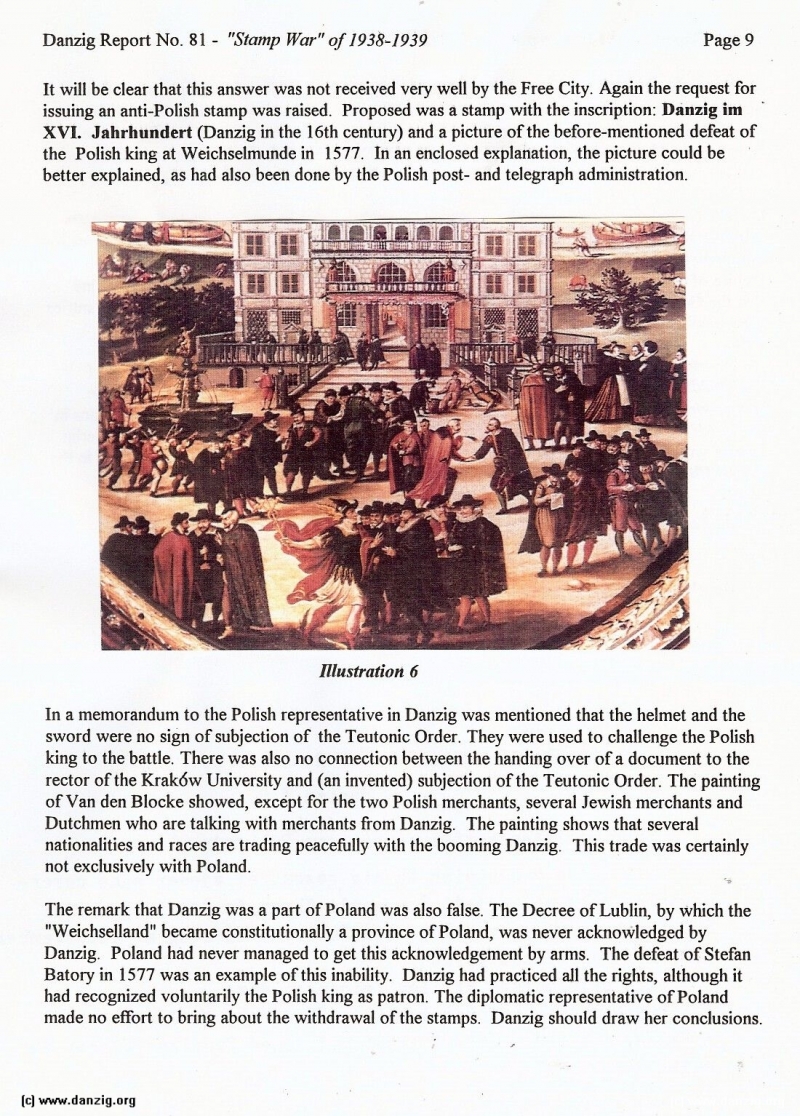
It will be clear that this answer was not received very well by the Free City. Again the request for issuing an anti-Polish stamp was raised. Proposed was a stamp with the inscription: Danzig im XVI. Jahrhnndert (Danzig in the 16th century) and a picture of the before-mentioned defeat of the Polish king at Weichselmunde in 1577. In an enclosed explanation, the picture could be better explained, as had also been done by the Polish post- and telegraph administration.
In a memorandum to the Polish representative in Danzig was mentioned that the helmet and the sword were no sign of subjection of the Teutonic Order. They were used to challenge the Polish king to the battle. There was also no connection between the handing over of a document to the rector of the Kraków University and (an invented) subjection of the Teutonic Order. The painting of Van den Blocke showed, except for the two Polish merchants, several Jewish merchants and Dutchmen who are talking with merchants from Danzig. The painting shows that several nationalities and races are trading peacefully with the booming Danzig. This trade was certainly not exclusively with Poland.
The remark that Danzig was a part of Poland was also false, The Decree of Lublin, by which the “Weichselland” became constitutionally a province of Poland, was never acknowledged by Danzig. Poland had never managed to get this acknowledgement by arms. The defeat of Stefan Batory in 1577 was an example of this inability. Danzig had practiced all the rights, although it had recognized voluntarily the Polish king as patron. The diplomatic representative of Poland made no effort to bring about the withdrawal of the stamps. Danzig should draw her conclusions.
Danzig Report Vol. 1 - Nr. 80 - October - November - December - 1993, Page 9.
Hits: 4085
Added: 06/07/2015
Copyright: 2025 Danzig.org

